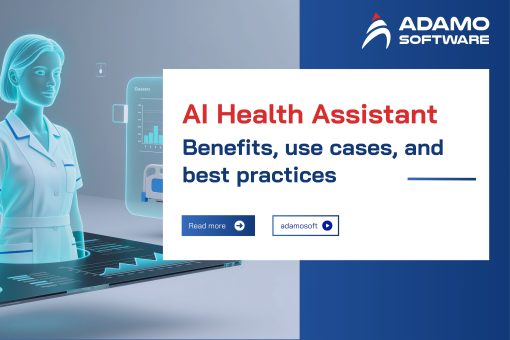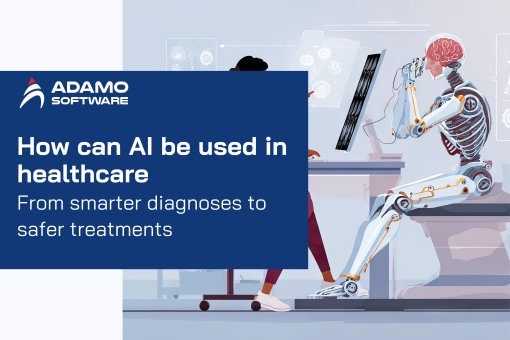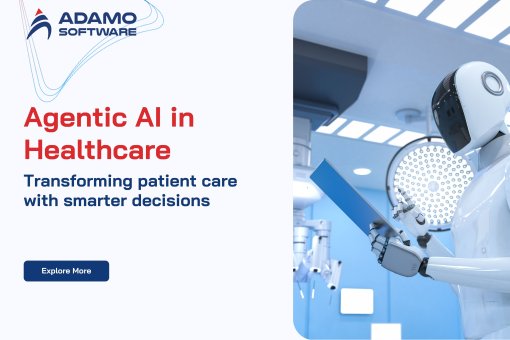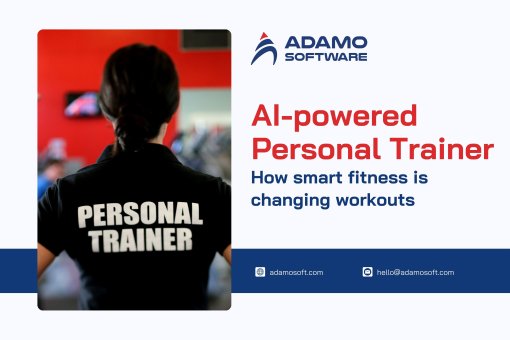AI automation in healthcare: Benefits, challenges, and solutions
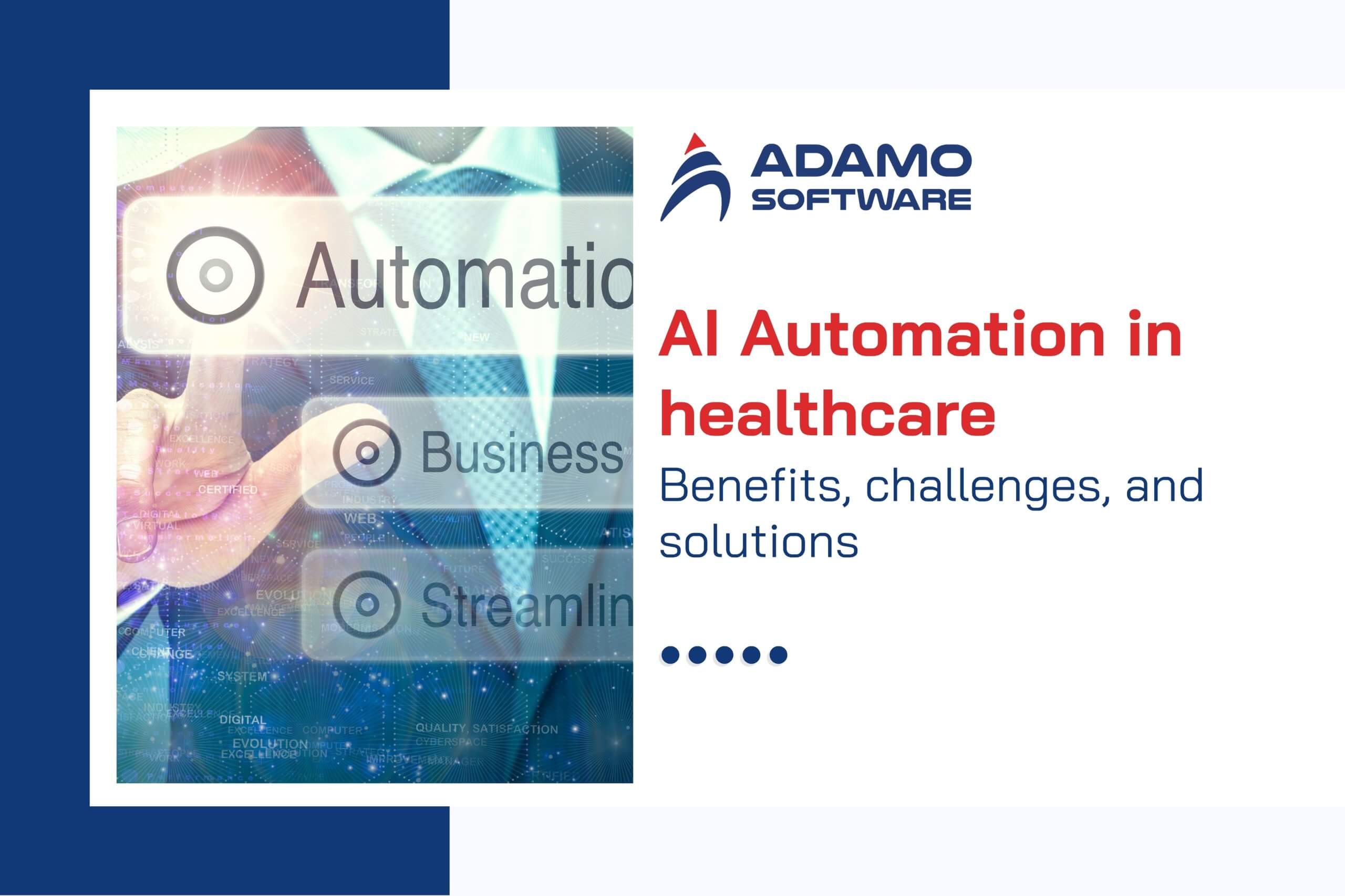
Explore AI automation in healthcare: reduce staff burden, save costs, improve workflows, and deliver smarter, safer, and faster patient care.
Changing prices, employee burnout, and multigenerational data overload are putting health care systems worldwide under intense pressure. This is a vital time when AI automation The application of AI in healthcare can become a fresh start. AI automation in healthcare refers to the integration of artificial intelligence. This encompasses machine learning, natural language processing, and intelligent agents in healthcare processes. It enables machines to learn, evolve, and respond, rather than simply adhering to a fixed set of policies. It is not just about automating.
AI automation in healthcare can process trends in data, identify potential dangers, compose documents, or provide diagnostic assistance. It assists in closing the present disparities between patient care and administrative burden. The numbers also demonstrate the adoption level in concrete numbers. A 2025 survey shows that 86% of healthcare organizations believe that they are extensively using AI today. The survey also shows that 94% of healthcare organizations consider AI a part of their operations. It is demonstrated that more than 70% of the C-suite health leaders intend to concentrate on operational efficiency and productivity – under such consideration, AI automation in healthcare is a business priority.
All these trends speak of batching AI automation in healthcare as not just a possibility, but a necessity.
I. What is AI automation in healthcare?
Automation has been used in healthcare to manage repetitive tasks of administrative services. For example, billing, scheduling appointments, and patient record management. But the old-style automation is simply a mathematician. AI automation within the medical sector goes a notch further. Machine learning (ML) and natural language processing (NLP) engage with data and identify patterns and serve as virtual assistants to automate systems more efficiently.
As compared to rule-based automation, AI is responsive to changing conditions. It also learns and predicts rises and recommends procedures to address healthcare challenges using previous health data. Owing to AI, for instance, in 2025, the rate of accuracy in certain forms of cancer cases has been reported to reach up to 95% by using AI-driven diagnostic tools. A variety of traditional methodologies cannot be reached.
Besides, AI predicting patient deterioration has been verified to be more than 80% accurate in certain environments. It suggests that healthcare teams become operational at an earlier stage.
To this end, AI automation in the health care industry is not just an efficiency measure. It makes it safer, smarter, and faster to respond. It shifts the industry of health care to a proactive one.
II. Benefits of medical AI automation
Speed is not the only benefit of AI automation in healthcare. It enhances quality, reduces cost, and liberates the staff to lend their real care. AI automation in the healthcare sector benefits the patients and their service providers.
- Less burden on staff – Saves surveys through automation of administration work to clinicians to concentrate on patients.
- Cost savings – Removes waste and cuts down the operations to save costs.
- Speediness & efficiency – Accelerates processes in offering services.
- Precision and safety – Means fewer mistakes made by humans and can help optimize medical decision-making.
- Scalability/ Adaptability– Systems expect to learn and become better as they expand.
- Improved patient experience – Less complicated interactions and customized treatment.
- Better utilization of resources – Anticipates and assigns human, bed, and equipment proficiently.
1. Reduced Load on Staff
AI can overhaul tedious tasks in the healthcare sector by automating hotel workers. It handles scheduling, notifications, data input and coding, and billing among other administrative tasks. By easing this AI burden, clinicians or support staff could pay more attention to directly serving patients. The NVIDIA State of AI in Healthcare poll discovered that 58% of respondents reported that they list their data analytics. This functions as an AI automation in healthcare, as one of their top AI workloads.
2. Cost Savings
Previous operations and clinical cost reduction are the most efficient advantages of AI automation in healthcare. Organizations can put money back in portfolios by streamlining workflows, removing duplication, and waste.
The Future Health Index estimates that the expanded use of AI could result in annual health spending savings of US$200-360 billion in the U.S. According to the Blue Prism AI Survey, 94% of healthcare organizations already consider AI as part of their operation. Moreover, a 2025 analysis discovered that physician groups can save 3 – 8% of their expenses. This means savings of between 20- 60 billion dollars.
3. Speed & Efficiency
The automation of AI used in hospitals increases patient registration, retrieval of records, documentation, and triage. Accelerated processes translate to the reduction of waiting time and experience for patients.
86% of healthcare organizations indicated that they are already deploying the use of AI primarily to enhance efficiency in 2025. A survey carried out by another entity discovered that 73% of healthcare executives thought that AI has lowered their operational expenses via accelerations in their workflows.
4. Accuracy & Safety
Medical mistakes are time and life-threatening. Cross-checking errors, detecting anomalies, and assisting accurate diagnosis are examples of how the automation of AI in healthcare can reduce these errors.
By the year 2025, artificial intelligence diagnostic tools are expected to reach a higher accuracy level of 90% on certain conditions, surpassing most manual tools. It is less risky and more accurate in making medical decisions.
5. Scalability & Adaptability
AI automation in healthcare can learn and change with new information unlike a rule-based system. This renders it more scalable and robust as patient requirements change.
According to a 2025 McKinsey forecast, generative AI and advanced automation are not viewed as pilots but rather as full-scale in healthcare. It is more adaptable than static machine tools. HealthTech Magazine also affirms that in 2025 organizations are no longer testing AI but relying on it to generate measurable ROI.
6. Better Patient Experience
Patients will be affected by the effects of faster systems. With AI automation in healthcare, chatbot service, instant lab results explanations, and personalized reminders are available. This contributes to care being less stressful.
According to the NVIDIA 2025 survey, 83% of healthcare leaders thought that AI would transform the care they provide over the next five years, most of which will be in the areas of patient-facing services. According to another survey, 78% of patients have a better understanding of their lab results when described by comparing AI tools.
7. Smarter Resource Use
Artificial intelligence in healthcare is used to predict the necessary quantity of beds, human resources, and equipment in capital and subsequently adjusts supply and demand accordingly. Hospitals can evade wastage and scarcity.
According to Future Health Index 2025, medical workers believe that AI can be crucial to assisting a department in working on more patients in the future. According to a report presented by Deloitte, 80% of the executives anticipate that AI will play a moderate or decisive role in the upcoming years.
III. Common challenges of AI automation in healthcare (Solutions included)
The potential of AI automation in healthcare is enormous, and challenges are also real. These are the key dilemmas and part of how they can be solved. Key Challenges:
- Risk data privacy and data security – Patient information is confidential and very appealing to criminals.
- Prejudice, justice, and bravery – Biased information may contribute to negative or undesirable results.
- Integration – It lacks ease of fitting into existing hospital systems and AI implementation.
- Explainability & trust – Clinicians should know and must trust AI decisions.
- Laws, responsibilities, and liability – Incoherence in rules of accountability.
- Resource and cost barriers – Expensive to implement tools, talent, and maintenance.
- Resistance & change management – Showing fear and mistrust impedes adoption.
1. Data Privacy & Security Risks
To achieve AI automation through healthcare, one needs extensive data sets of patients. Such information is very confidential. Without system protection, trust and safety will be ruined through leaks and abuse.
- Cyberattacks or data breaches in most instances are aimed at attacking the healthcare systems due to the health data. The most expensive sector, and representing half of all reported incidents, was listed as healthcare breaches. They were found to cost on average a staggering 11 million dollars.
- The wrongful usage of identifiable data may result in breach of patient trust or legislation such as HIPAA.
Solution ideas:
- Encrypt, anonymize, and de-identify stored and transit data using strong encryption.
- Offer role-based access controls to monitor user access to data.
- Codify strong data governance regulations and approval processes.
- Turn it up red now and then or simulate an attack.
- Use dashboards to monitor usage to identify distressed access patterns in time.
2. Bias, Fairness & Equity
The data of AI models is only as good as the data. In the event of skewed historical data (e.g. populations are under-represented), AI automation in healthcare will lead to biased outcomes, negatively impacting disadvantaged communities.
- Bias can potentially result in misdiagnosis and unfair treatment or exclusion of minorities.
- Given groups that are underrepresented, some models might have a low-under-risk prediction. In a study by Nature Medicine, issues with AI-based diagnostic tools trained on small datasets, researchers found that minority populations obtained up to 20% less reliable results.
Solution ideas:
- Make the diversity of training datasets (age, gender, ethnicity, geography).
- Write metrics of fairness when validating and measuring performance across subgroups on an ongoing basis.
- Add domain-trained personnel to scan flagged biases.
- Provide human override and inspection of doubtful cases.
- Publicize algorithms to external auditors, as organizations of trust.
3. Integration & Workflow Disruption
AI implementation in a real-world hospital and clinical environment is a challenge. The systems that are already in use have been running legacy software across numerous systems. AI automation in healthcare can upset the workflow, disorient, or even cause duplication of work.
- Research by McKinsey indicates that less than 30% of medical institutions have fully integrated AI in their daily healthcare operations.
- The lackluster fit of AI tools and clinical routines can be a point of friction or rejection.
Solution ideas:
- Pilot projects in narrow scopes to begin with to get the user interface and process fit refined.
- Design with staff (doctors, nurses, admin) to be adopted.
- Training, support, and documentation.
- Integrating AI modules with an existing hospital information system dramatically improved by using APIs and middleware and options so that there is minimal disruption to staff.
- Monitor usage and feedback dashboards (as Capably does with performance tracking) to better adapt.
4. Explainability & Trust
AI tends to remain a black box – it is not clear how AI arrives at some of its conclusions. Users in the healthcare industry would like to know why. Clinicians and patients can lack trust in AI automation in healthcare without transparency.
- Lack of explainability may inhibit adoption in an important decision.
- Trust correlates with openness, responsibility, and honesty regarding the limits of AI. According to the report by the BCG, the future of AI in healthcare 2025 revealed that 67% of clinicians are reluctant to use AI tools if they do not have clear explanations.
Solution ideas:
- Apply explainable AI techniques (e.g. feature importance, local explainable models) in such a way that users are given an insight into what factors affected their decisions.
- Develop human-in-the-loop infrastructures whereby AI proposals are questioned and then acted upon.
- Present for every score and uncertainty, or other suggestions.
- Provide interfaces that indicate reasoning paths or rationale.
- Establish a body of governance on AI decision-making and feedback.
5. Regulation, Liability & Accountability
In the medical sector, there is harm caused by making the wrong decisions. When AI is based, it is unclear who will be held accountable. It might be either the provider or the AI vendor, or an independent party.
- In a variety of places, there is very little legal precedent regarding AI liability in diagnoses or recommendations.
- The regulation of medical devices, data regulations, and control rules is not easy. According to the Deloitte Global Healthcare Outlook 2025, 80% of the executives agree that the greatest impediment to AI automation in the healthcare sector is regulatory ambiguity.
Solution ideas:
- AI should be a decision support tool, but not an autonomous decision-maker. Therefore, keeping clinicians responsible.
- Keep a complete audit record of AI recommendations and user overrides.
- Engage the regulators at the initial stage; categorize systems (e.g. as medical equipment).
- Add disclaimers, safety checks, and fail-safes.
- Implement the so-called trustworthy AI frameworks which are based on transparency, accountability, and human control.
6. Cost & Resource Barriers
AI automation in healthcare involves spending on equipment, software, data storage, employee talent, and maintenance.
- Smaller clinics or less affluent systems may not be able to afford AI systems, infrastructure, or skilled personnel.
- The constant updating of models, the consumption of computing resources, and observation are necessary to scale AI. According to Philips Future Health Index, the initial cost of integrating AI may cost between 500,000 and 5 million per hospital depending on its size.
Solution ideas:
- Begin with the modular AI tools or SaaS models to reduce the initial cost.
- Asset open-source models or shared infrastructure to decrease the cost.
- Use cost-benefit analysis to prioritize near ROI cases of AI use.
- Scale with cloud computing.
- Find partners, grants, or co-funding to share expenses.
7. Resistance & Change Management
Healthcare AI automation may also cause some staff to feel that their jobs or level of control are threatened. Other people might be quite skeptical about new systems or unwilling to break their old habits.
- Adoption may be slowed by either fear of job loss or mistrust.
- Underuse is caused by a lack of training or poor change management. According to the Blue Prism AI Survey, 44% of healthcare employees agree that the primary reason why AI is not readily adopted is the fear of being replaced by AI.
Solution ideas:
- Message efficiently, AI does not substitute, rather complements clinicians.
- Use push and pull principles in designs and participation of staff in the early designs.
- Train, facilitate, and encourage adoption.
- Demonstrate fast gains and benefits.
- Turn champion idea champions around.
You can explore more about How can AI be used in healthcare: From smarter diagnoses to safer treatments here.
IV. 5 ways AI automation is transforming the healthcare industry
It is not just a tool, AI automation in healthcare is transforming the manner of care delivery, the administrative activity of hospitals, and the patient experience. The following are used as critical areas of transformation with each described further using examples and data.
- Resource distribution – fit resources to demand.
- Improvement in the supply chain management – smarter supply flows.
- Conditional maintenance – less equipment downtime.
- Increase flow throughput/ WFP – less waiting, more throughput.
- Automating routine and administrative tasks – Painting and taking away the manual labor-intensive administrative processes
1. Optimizing Resource Allocation
Healthcare AI automation can predict the number of patients visiting, which staff, rooms, and equipment will be required. This allows hospitals to be more intelligent with resources.
- Artificial intelligence is applied in hospitals to forecast patient inflow. These projections aid in the determination of staffing rotations, bed occupancy, and the distribution of equipment to reduce wastage.
- Many health professionals report that AI-based Inventory Management Systems, and Robotic Process Automation (RPA) are the most frequently used technologies to optimize resources.
Explore Our Tailor-made Software Development Solutions
We are confident in providing end-to-end software development services from fully-functioned prototype to design, MVP development and deployment.
2. Enhancing Supply Chain Management
The AI automation of healthcare enhances the flow of medical supplies and drugs within the system. It prevents stockouts and overstocks.
- The AI prediction systems examine the past usage history of supplies and forecast demand. That saves time loss in failing to find items and also cuts off the high price of out-of-stocks.
- According to Dialectica, more successful demand forecasts and decreased operational expenses due to AI automation in healthcare within their supply chains.
3. Facilitating Predictive Maintenance
Machines used in medicine do not work; the time lost may mean saving lives. Scheduling the fixes beforehand and predicting the failures AI automation in healthcare can aid in the field.
- Through their workload monitoring and the perception of failure trends, AI may alert that the machines are prone to a breakdown. Parts can also be fixed or replaced in advance.
- This minimizes unexpected downtime and prepares critical machines and extends equipment life. According to the Dialectica survey, one of the most popular methods with which AI changes the operations in hospitals is predictive maintenance.
4. Improving Patient Flow & Scheduling
Patients are relieved when they must wait, and so are the staff. Patient flow and scheduling in healthcare become smarter and easier, with AI automation.
- AI processes examine all appointment data and forecast any form of cancellations or no-shows. They vary programs on the fly. This maximizes time slots.
- AI is being applied to address patient flow and shorten wait times in many hospitals. These instruments minimize time wastage and increase the overall time in relation to the load of patients on doctors.
5. Automating Routine Administrative Tasks
Billings, claims, documentation-numerous business-side activities consume staff time. In healthcare, AI automation shifts much of that job to machines.
- The AIs help in the automation of data entry, claims processing, billing, and other routine tasks. This will reduce the rate of errors, increase turnaround, and release personnel.
- One of the most common applications of automating AI within the healthcare field is handling usual administrative services, which are automated. According to leaders, it minimizes human error and allows employees to work on more valuable tasks.
V. Final thoughts
Healthcare AI automation is not a notion anymore; it is making realities re-exist. Its proper deployment enables system scaling, clinician – and patient-focused care, and patient-focused care, making it smooth and safer. It should be adopted though smart, ethical, and reliable.
Innovative healthcare technology will focus on digital transformation. Adamo Software adds that one of the emerging tendencies that can assist in the workload reduction and processes optimization in the sphere of medical records management, diagnosing, and patient care, is automation and digitalization.







